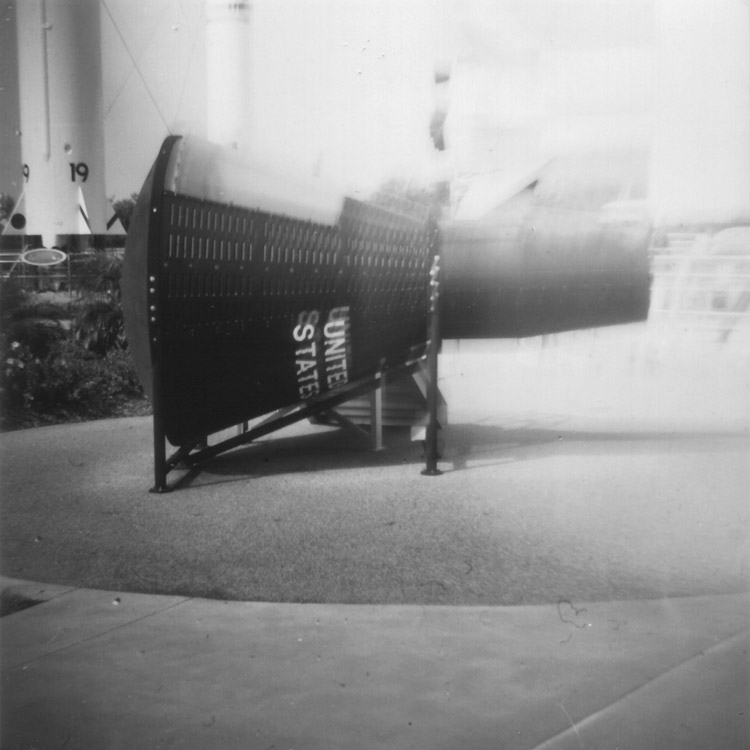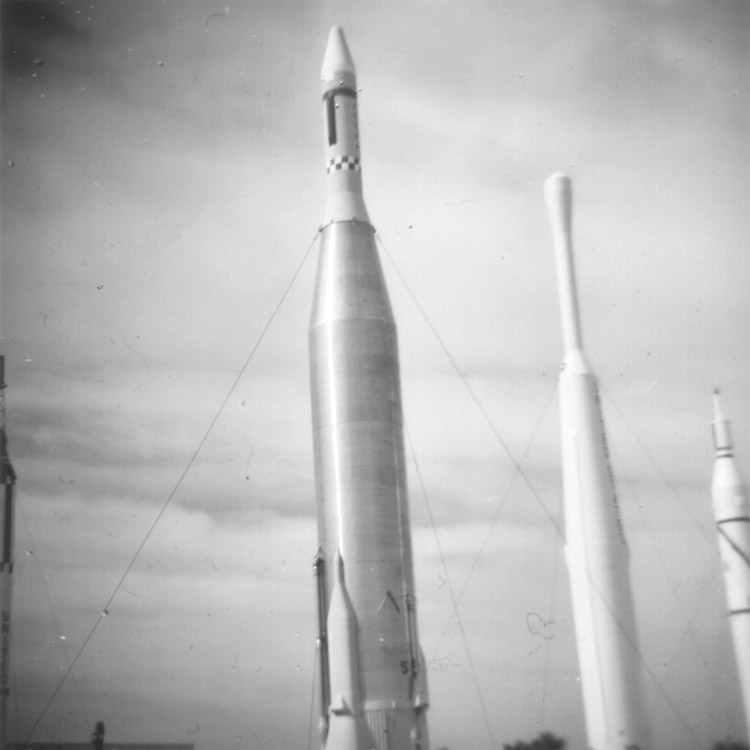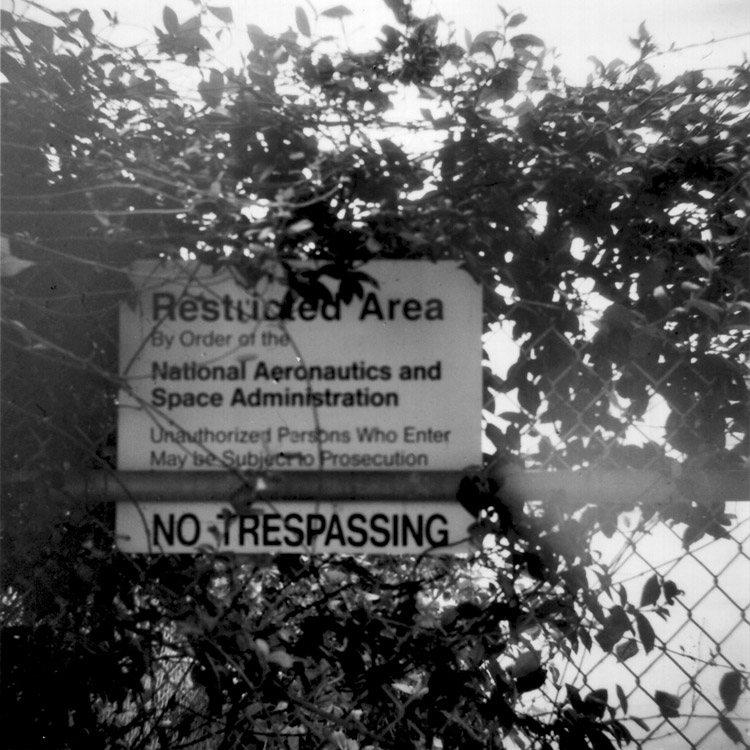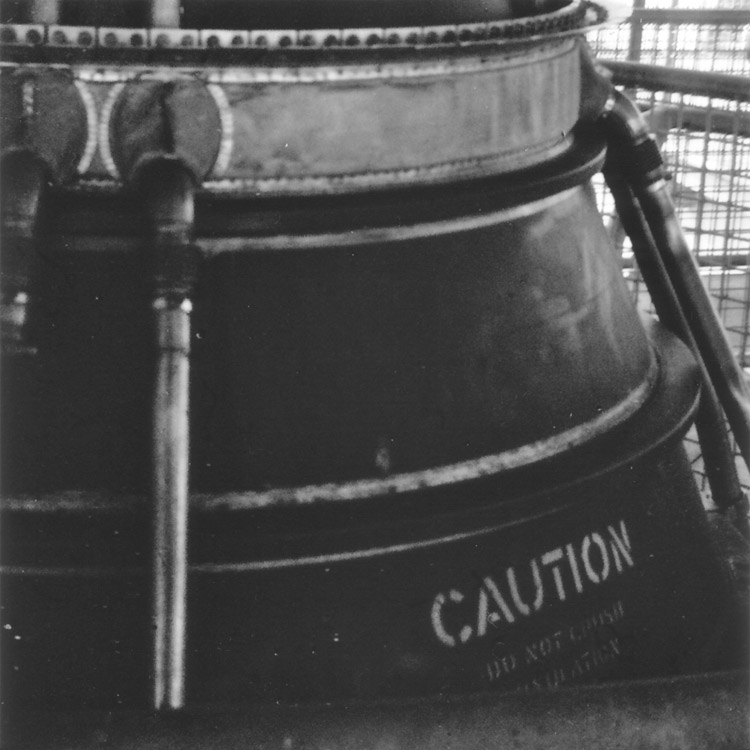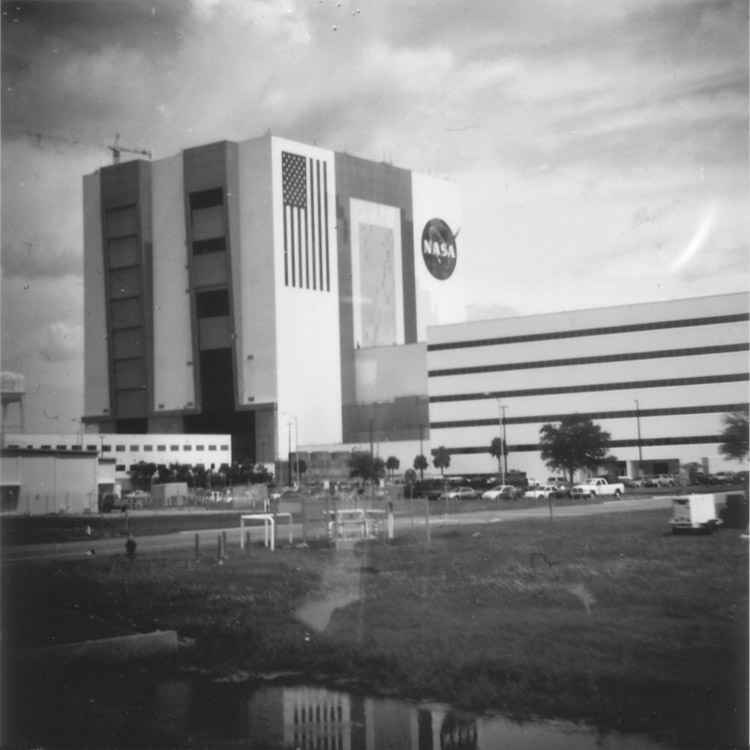There’s cameras on a space ship, they’re going on a long trip
When we were in Florida a couple of weeks ago, we took a day trip to Cape Canaveral and visited the Kennedy Space Center. I was just over a week shy of my sixth birthday the day men first landed on the moon, which I think was the perfect age to be during the Apollo era. The space program made a big impact on me as a kid. I built models of Mercury Redstone rockets and Gemini/Titans, and had a really cool model of the Apollo/Saturn V, complete with doors that opened to show the Lunar Module. On my eighth birthday, Apollo 15 astronauts drove the moon buggy for the very first time. I remember having a lunch-time party for my friends that day, and when they all left, turning on the TV to watch the moon buggy. All of my friends were into space, and we eagerly discussed everything that happened.
So I was really looking forward to our day trip down from St. Augustine to the Kennedy Space Center. And I wasn’t disappointed. It was a lot of fun.
The battery in my Digital Rebel died shortly after we got there, but I had brought along my 1960s-vintage Diana-F, loaded with black and white 400 speed film. The Diana-F was a cheap plastic camera made in Hong Kong. It was either sold cheaply here in the U.S. or given away with the purchase of a tank of gasoline. There were a lot of promotions like that at gas stations back then for things like glasses bearing the logo of your favorite sports team and such. So why not a camera?
And besides, given that the heyday of the space program was in the 1960s, it only seemed right to document it with a camera from that era. The camera has lousy optics and light leaks (as the guys at my local photo shop tell me every single time I bring in film to develop) and, if you use color film, interesting chromatic aberrations. Some times this can be used to good artistic effect. Not so much here, maybe; I wasn’t overly happy with most of the photos I took, but some are almost kind of interesting. The Mercury capsule in the Rocket Garden that you see off to the left as you first enter the Visitor’s Center almost looks like it could be moving, with the "United States" identification doubled up and blurry (but the number on the rocket behind it in clear focus). There are a bunch of rockets in the garden, many of which pre-date manned launches. 30 years ago, I probably could have identified all of the rockets in the Rockets in a row photo above. I think the first one is an Atlas from the Mercury era. I definitely recognize the middle one, one of the goofiest looking rockets America ever had, the Thor rocket. Anyway, the Rocket Garden was pretty cool, lots of the oldest rockets NASA had, right outside the exhibit about early space flight. We didn’t make it to that one this time, unfortunately.
There were two excellent films playing at the IMAX theater, and we saw the one about the Apollo program, Magnificent Desolation, in the morning. Then we got some lunch and moved on to the bus tour of the grounds of the space center. The bus tour takes up the better part of the day, what with the lines to get back on the buses to move to the next stop and all.
First stop on the bus tour was the Launch Complex 39 observation gantry, from where you can get a reasonably good view of the two launch pads, 39A and 39B, used by the Space Shuttle. I think 39A was also used by Apollo. Off in the distance, you can also see Cape Canaveral Air Force Base, home of many of the launch pads used for early launches, up to the Gemini era. This was where I took the Restricted Area photo and the photo of a Space Shuttle engine. We also got to drive past the Vehicle Assembly Building, the largest one story building in the world, custom built to handle the Saturn V rocket and now used for the Space Shuttle. Coming out of the VAB, there’s a separate "road" of crushed rock that’s used to move the vehicles from the VAB out to the launch pads.
From there, it’s off to the Apollo/Saturn V Center. That’s mostly indoors, and few of my photos there came out, but I did get a nice shot of the under side of the Saturn V with its monstrously huge engines. The Apollo/Saturn V center is the nicest part of the standard tour. It’s also the most touristy, with recreations of the moon walks and such. I don’t generally like to do touristy things, but I enjoyed this. The Apollo/Saturn V hanging overhead in the building really drives home how freakishly large that rocket was, especially after seeing a bunch of comparatively small ones in the Rocket Garden earlier in the day. Good stuff. Third and final stop was the International Space Station Center. There really isn’t a whole lot to this part; you can walk through duplicates of some of the modules that are already in orbit, and you can look down on to the floor where workers are preparing modules that will be launched in the next few years to complete the Space Station. It’s probably the closest you come to seeing the actual workings of NASA on the tour, so it’s worthwhile from that standpoint. I didn’t take any photos there.
On our way to the Space Station Center, one of the passengers on the bus got sick. Her husband asked the driver to pull over and they ran across the road into the weeds. Shortly thereafter, paramedics showed up. Not sure what happened, but not my business I suppose. I hope she was alright.
After the tour, it was back to the Visitors Center. We had just enough time to squeeze in the other IMAX film, Space Station 3D. That was pretty interesting too, and made up of actual footage shot on the Space Station rather than recreations like Magnificent Desolation. I confess, I haven’t paid much attention to the Space Station; most of what NASA has done in manned spaceflight since Apollo ended has seemed to be a holding action until they figure out what to do next, to be perfectly honest. I’ve been more interested in the unmanned missions like the Mars Rovers (they take a licking and keep on ticking) or the fact that the Pioneer probes launched back in the 1970s are now on the verge of exiting the solar system entirely.
I really enjoyed our day at the Kennedy Space Center, and I’d like to go back sometime. The Cape Canaveral Then and Now tour sounds like something I would really like to try, and there were some exhibits in the Visitors Center we didn’t get a chance to see.
Posted at 12:55 PM
Link to this entry || 3 comments
